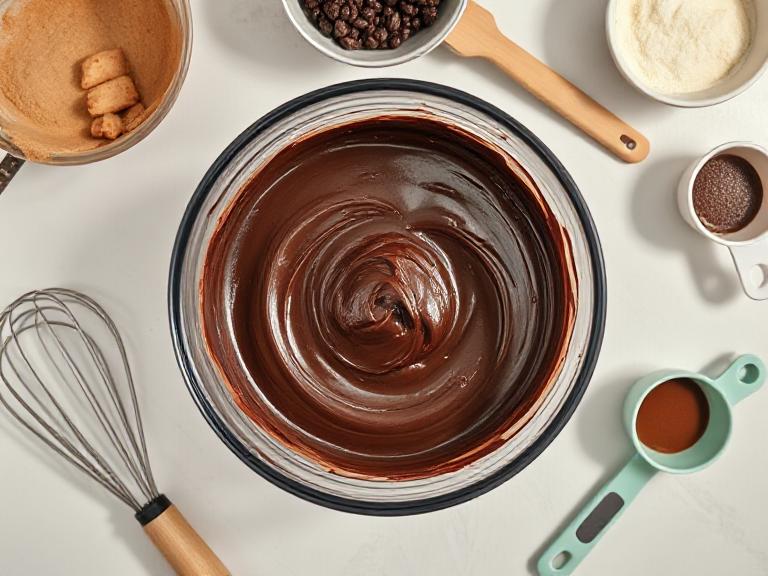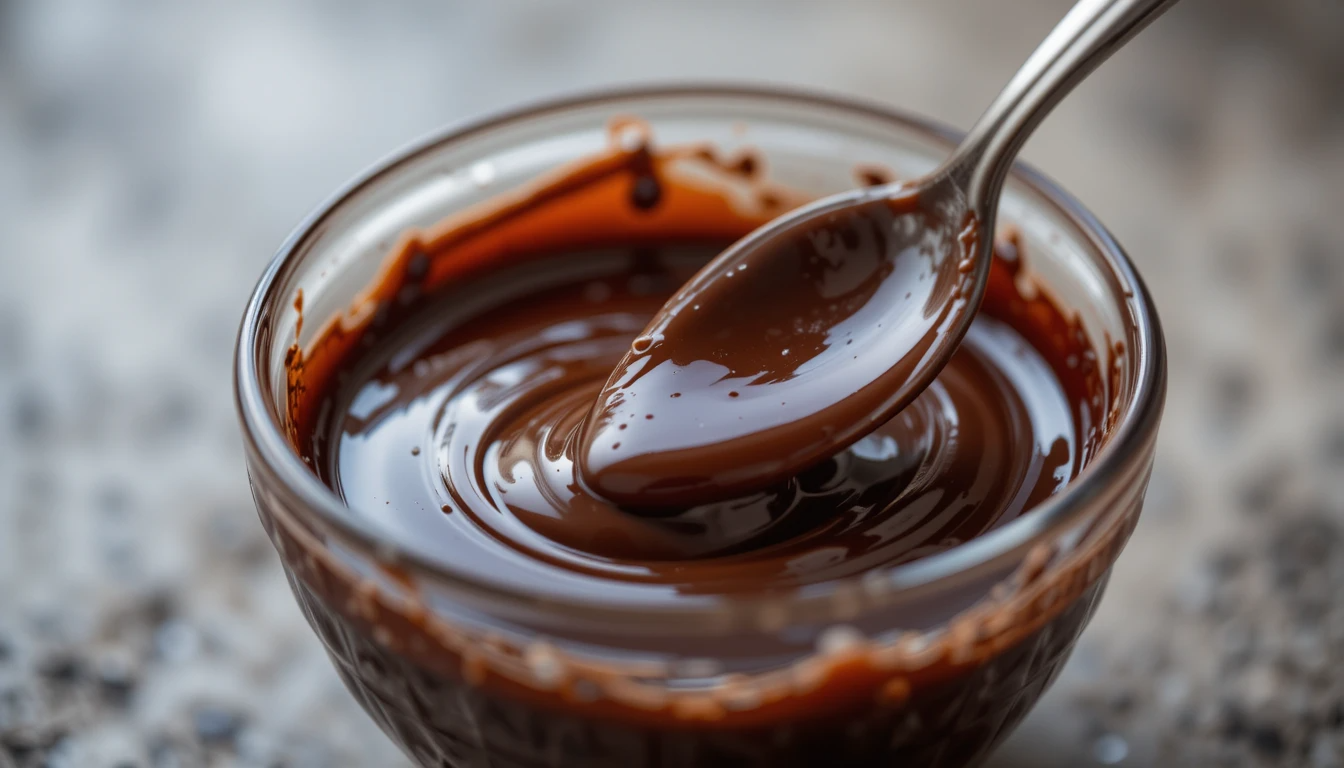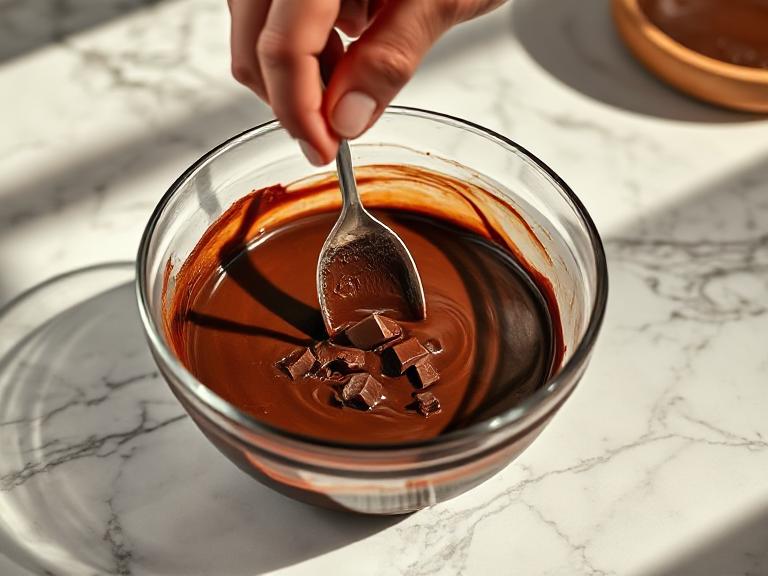Chocolate seizing and overheating are common problems that can frustrate both home bakers and professionals. Seized chocolate happens when even a small amount of water mixes with melted chocolate, causing it to turn thick, grainy, and clumpy.
Overheated chocolate, on the other hand, becomes dry, lumpy, or burnt when it exceeds its ideal melting temperature. Understanding these issues is key to rescuing chocolate and achieving smooth, silky results.
There are several quick solutions to fix seized chocolate. Adding a small amount of boiling water, heavy cream, or vegetable shortening while stirring can restore its texture.
For overheated chocolate, cooling slightly, stirring in solid chocolate, straining, or using an immersion blender can bring it back to a workable state. Preventive measures are equally important—keep all utensils dry, melt chocolate slowly over a double boiler or in short microwave intervals, monitor temperature carefully, and stir frequently.
Even chocolate that seems ruined can be repurposed creatively. It can be turned into chocolate sauces, spreads, ganache, hot chocolate, or incorporated into brownies, cookies, and other baked goods. Expert tips and troubleshooting advice, such as adding fat to grainy chocolate or straining stubborn lumps, further ensure success.
With the right chocolate rescue techniques, preventive strategies, and creative uses, you can save seized or overheated chocolate and transform it into smooth, glossy, and delicious desserts. This guide equips you to handle any chocolate mishap confidently, keeping your sweet creations perfect every time.

Immediate Solutions for Seized Chocolate
When chocolate seizes, it can feel like your dessert is ruined—but don’t worry! There are several effective ways to fix seized chocolate and restore it to a smooth, usable state. Acting quickly is key to rescuing melted chocolate before it becomes too hard or clumpy.
One of the simplest solutions is to add a small amount of boiling water. Start with just a teaspoon at a time while stirring constantly. The hot water helps dissolve the sugar and cocoa particles, making the chocolate smooth again. Be careful not to add too much water, as it can worsen the seizing.
Another option is using heavy cream. Gently heat the cream and mix it into the seized chocolate. This creates a glossy, silky texture, perfect for sauces, ganache, or chocolate desserts.
You can also use vegetable shortening. Adding a teaspoon at a time while stirring helps loosen the chocolate and improve its flow, making it easier to pour or use in baking.
For stubborn clumps, an immersion blender can help. Blend the chocolate carefully until it becomes smooth, being mindful not to incorporate excess air.
Each method works best depending on your recipe and how much chocolate has seized. By understanding these quick chocolate rescue techniques, you can save your sweet treats, avoid waste, and keep your chocolate silky and smooth. With these strategies, even seized or overheated chocolate doesn’t have to stop you from creating delicious desserts.

Rescuing Overheated Chocolate
Overheating chocolate can be just as frustrating as seizing. When chocolate gets too hot, it may become dry, lumpy, or lose its glossy texture, making it difficult to use for baking or dessert recipes. But with the right chocolate rescue techniques, overheated chocolate can often be saved.
One effective method is cooling the chocolate slightly and then adding small chunks of solid chocolate. Stirring gently helps redistribute the cocoa solids and fats, smoothing out the texture. This technique works well for both dark and milk chocolate.
Another way to restore overheated chocolate is by straining it. Pour the chocolate through a fine sieve to remove any lumps or clumps, creating a smooth, even consistency.
You can also use vegetable oil or soy lecithin to help emulsify the chocolate. Adding a teaspoon at a time while stirring can restore the silky texture, especially if the chocolate feels thick or stiff.
For a more hands-on approach, an immersion blender can be used to gently blend the chocolate until it becomes smooth. This method works well for ganache, chocolate sauces, or any melted chocolate that needs a glossy finish.
Finally, always monitor the temperature to prevent further damage. Using a thermometer can help ensure chocolate doesn’t exceed its ideal melting range.
By understanding these techniques, you can save overheated chocolate and turn it back into a smooth, usable ingredient. With a little care, even chocolate that looks ruined can be rescued, helping you create perfect desserts every time.
Preventive Measures to Avoid Seizing and Overheating
The best way to deal with seized or overheated chocolate is to prevent it from happening in the first place. Simple precautions can save time, effort, and ingredients, ensuring your chocolate remains smooth, glossy, and easy to work with.
Keep all utensils and equipment dry
Even a drop of water can cause chocolate to seize. Make sure bowls, spoons, and spatulas are completely dry before coming into contact with chocolate.
Melt chocolate slowly and carefully
Use a double boiler or a microwave in short intervals, stirring frequently. Slow melting helps maintain a consistent temperature and reduces the risk of overheating.
Monitor temperature closely
Chocolate has an ideal melting range depending on its type—dark, milk, or white. Using a thermometer ensures you don’t exceed this range, preventing the chocolate from burning or thickening.
Avoid steam and moisture
If using a double boiler, ensure the bowl does not touch the water and that steam doesn’t condense into the chocolate.
Stir constantly
Frequent stirring distributes heat evenly, keeping the chocolate smooth and preventing hot spots that can cause overheating.
Store chocolate properly
Keep chocolate in a cool, dry place, away from humidity or direct heat, which can affect its texture when melted.
By following these preventive measures, you minimize the chance of chocolate seizing or overheating. Understanding and applying these chocolate melting tips will help you work confidently, whether you’re making desserts, ganache, sauces, or baked goods. Smooth, silky chocolate becomes easy to achieve every time with these simple practices.
Creative Uses for Seized or Overheated Chocolate
Even if your chocolate seizes or overheats, it doesn’t mean it’s wasted. With a little creativity, you can transform it into delicious treats or useful ingredients for other recipes. Understanding how to repurpose seized chocolate can save both time and money in the kitchen.
One popular option is to make chocolate sauce. Simply heat the chocolate gently with a small amount of cream or milk, stirring until smooth. This creates a rich, velvety sauce perfect for drizzling over ice cream, pancakes, or desserts.
Seized or overheated chocolate can also be turned into chocolate spreads or ganache. Mixing it with a bit of butter or cream produces a smooth, spreadable mixture that works beautifully on toast, cakes, or pastries.
Another option is baking with rescued chocolate. You can fold seized chocolate into brownie or cookie batters. Even if the texture isn’t perfect, the chocolate will melt during baking, adding flavor and richness.
For a quick treat, consider making hot chocolate. Melt the chocolate with milk and a pinch of sugar or cinnamon, creating a cozy drink that masks minor texture issues.
By exploring these creative uses, you can save chocolate that might otherwise be discarded. These techniques not only reduce waste but also give you versatile ways to enjoy your chocolate. With a little ingenuity, even seized or overheated chocolate can shine in delicious recipes, turning potential mishaps into sweet successes.

Expert Tips and Troubleshooting
Even experienced bakers encounter seized or overheated chocolate from time to time. Knowing a few expert tips can make it easier to rescue your chocolate and prevent mistakes in the future.
Avoid water contact
One of the most common causes of seized chocolate is even a small drop of water. Always ensure your bowls, utensils, and workspace are completely dry before handling chocolate.
Work with the right temperature
Chocolate has specific melting ranges: dark chocolate melts between 45–50°C (113–122°F), milk chocolate between 40–45°C (104–113°F), and white chocolate between 40–43°C (104–109°F). Using a thermometer can help prevent overheating, which keeps chocolate smooth and workable.
Stir frequently
Constant stirring distributes heat evenly, reducing the chance of hot spots that can cause burning or thickening.
Know quick rescue methods
If chocolate seizes, experts recommend adding small amounts of boiling water, heavy cream, or vegetable shortening while stirring. Overheated chocolate can be rescued by cooling slightly and stirring in solid chocolate or using an immersion blender to smooth it out.
Troubleshooting common problems:
- If the chocolate remains grainy, try adding more fat (cream or shortening) slowly.
- If it’s too thick for pouring, gently reheat over a double boiler.
- For stubborn lumps, straining can help achieve a smooth texture.
Following these tips ensures your chocolate is consistently smooth, glossy, and perfect for desserts, sauces, or baking. With practice, rescuing seized or overheated chocolate becomes simple, turning potential kitchen mishaps into successful sweet creations.
Conclusion
Dealing with seized or overheated chocolate can be frustrating, but it doesn’t have to ruin your baking or desserts. Understanding why chocolate seizes—due to moisture—or overheats—because of high temperatures—is the first step to rescuing it effectively.
Using methods like adding boiling water, heavy cream, or vegetable shortening for seized chocolate, and cooling or blending overheated chocolate, allows you to restore smooth, silky texture and continue creating delicious treats.
Preventing these issues is just as important. Always use dry utensils, melt chocolate slowly, monitor temperature carefully, and stir constantly. Even when chocolate seems ruined, creative uses such as sauces, spreads, ganache, or hot chocolate can save it.
With these chocolate rescue techniques, expert tips, and preventive measures, you can confidently handle any chocolate mishap. Seized or overheated chocolate doesn’t have to go to waste—you can turn it into smooth, glossy, and irresistible desserts every time.
FAQs
- What causes chocolate to seize and how can I prevent it?
Chocolate seizes when a small amount of water or moisture comes into contact with melted chocolate, causing sugar and cocoa particles to clump together. Overheating can also damage chocolate, making it thick or grainy. To prevent seizing, always use dry utensils, melt chocolate slowly over a double boiler or in short microwave bursts, stir frequently, and avoid steam or condensation near the chocolate. Using proper melting temperatures for dark, milk, or white chocolate also helps maintain a smooth texture. - How do I fix seized chocolate quickly?
Seized chocolate can often be rescued by adding a small amount of liquid or fat. For dark chocolate, try adding 1 teaspoon of boiling water at a time while stirring until smooth. You can also mix in heavy cream or vegetable shortening to restore a silky texture. Using an immersion blender for stubborn clumps can also help achieve smooth chocolate suitable for sauces, ganache, or baking. - Can overheated chocolate be saved?
Yes! Overheated chocolate can be restored by cooling it slightly and stirring in small chunks of solid chocolate. Straining the chocolate to remove lumps or adding a small amount of vegetable oil or soy lecithin can also help smooth it out. An immersion blender works well to recreate a glossy, pourable consistency. - What are creative ways to use rescued chocolate?
Even chocolate that seems ruined can be repurposed. Make chocolate sauce, hot chocolate, spreads, or ganache. You can fold it into brownies, cookies, or cake batters. Rescued chocolate adds flavor and richness, so no chocolate goes to waste. - Are there expert tips to avoid seizing and overheating in the future?
Yes! Always melt chocolate slowly, keep all utensils dry, monitor the temperature, and stir constantly. Use a thermometer to maintain the ideal melting range (dark chocolate 113–122°F, milk chocolate 104–113°F, white chocolate 104–109°F). Adding fat gradually and working in small batches can also prevent texture problems. - Is it safe to eat chocolate that has seized or overheated?
Absolutely! Seized or slightly overheated chocolate is safe to eat; the issue is texture, not safety. Once rescued using the methods above, it can be used in desserts, sauces, and baked goods without affecting flavor. - How can I tell the difference between seized and overheated chocolate?
Seized chocolate is grainy, thick, and clumpy due to moisture. Overheated chocolate is dry, stiff, or burnt with a shiny but uneven texture. Recognizing the issue helps you apply the correct chocolate rescue method and restore smooth, usable chocolate.

